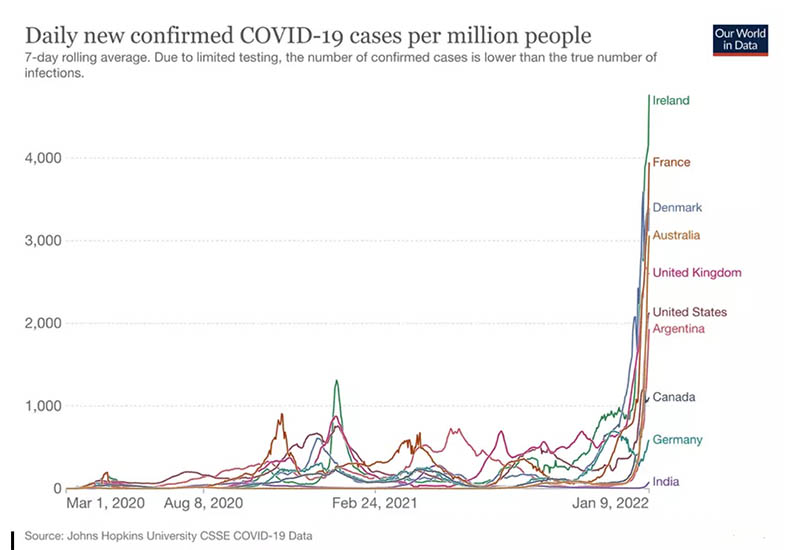The US Centers for Disease Control and Prevention (CDC) on Monday advised against travel to Canada because of a rising number of COVID-19 cases. The CDC elevated its travel recommendation to “Level Four: Very High”, telling Americans they should avoid travel to its northern neighbor. Curiously, while the CDC warning actually says “Avoid travel to Canada” and adds “If you must travel to Canada, make sure you are fully vaccinated before travel,” for Mexico, listed at Level Three, the warning is simply the latter, “Make sure you are fully vaccinated before you travel.” This despite the fact Mexico’s confirmed Covid cases rose 186 percent last week.
The CDC currently lists about 80 destinations worldwide at Level Four, including the UK, Ireland, France, Spain and much of Europe. It also raised the island of Curaçao to Level Four on Monday.
This is quite interesting – you can check them out for yourself here https://wwwnc.cdc.gov/travel/destinations/list
Canada advised residents in March 2020 not to travel abroad for non-essential reasons like tourism. It withdrew the notice in October – before the first Omicron cases were reported – citing the success of vaccination campaigns.
Canada remains one of the top foreign destinations for Americans.
Here is something we also find interesting: While WHO has warned against calling the COVID-19 Omicron variant ‘mild’, there seems little question that Omicron is less severe than the Delta variant. WHO said early studies showed that compared with Delta there was a reduced risk of hospitalization from the variant. There appears also to be a reduced risk of severity in both younger and older people, but uncertainties remain.
The symptoms appear to differ from previous COVID-19 variants. While the main COVID-19 symptoms are still said to be a cough, high temperature and loss of smell and taste, the symptoms for Omicron, reported in a London study taken in December, accounted for half of all cold-like illnesses in the UK.
The top five symptoms reported in London for those testing positive for COVID-19 were runny nose, headache, fatigue, sneezing and sore throat.
However, it is unclear how many people with mild symptoms are not being hospitalized, and are staying home and self-medicating for the week or two it takes to get over the symptoms – how reliable then are the Omicron counts. And, which countries are reporting them accurately? Can there be any accurate reporting? How many people are reporting they have COVID when they have mild symptoms treatable with over-the-counter medication? Anecdotal evidence says many are not, or how many people believe they have had Covid when in fact they have had a cold or flu?
The pandemic is far from over. The week ending 02 January saw the highest number of cases reported since the pandemic’s start, according to The World Health Organization (WHO) and new record COVID-19 infections are being reported by countries from Argentina to Israel each day.
However, the CDC lists both China and India at Level One – Low.
I am currently in Florida. There are no lockdowns, no mandatory masking, no social distancing, and restaurants, stores and movie theatres are open. Some people are careful some are not.
In November the US lifted restrictions at its land borders with Canada and Mexico for fully vaccinated foreign nationals, ending curbs on non-essential travellers in place since March 2020 to address the COVID-19 pandemic.
COVID-19 hospitalizations in the United States reached a fresh high of 132,646, according to a Reuters tally on Monday, surpassing the record of 132,051 set in January last year, amid a surge of the highly contagious Omicron variant.
Some interesting information:
The CDC warning about travel to Canada – you can also check warnings to other countries.
The number of Coronavirus cases worldwide as of Jan 10, 2022
DAILY NEW COVID CASES AS OF JAN 09,2022


